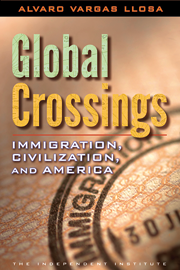WASHINGTON—We are entering an era of high inflation, to judge by the massive growth of the money supply in the United States, Europe and Asia, and the stubbornness of central bankers who insist that high unemployment demands the creation of even more money. The last time the world went through a similar period was the 1970s. The term that defined the era was “stagflation.”
In a nutshell, stagflation back then was the result of a recession partly caused by stratospheric oil prices followed by the decision to print tons of money in the hope of inflating the economy out of unemployment. In other words, stagnation was not so much because of oil prices; rather, it was the result of the monetary response to the stagnant environment that the high energy costs had helped create. Inflation simply added a new ill to an already grave situation.
What is happening today is in essence not all that different. The response to high unemployment caused by the recession has been a massive increase of the money supply. Since the end of the housing bubble, the Federal Reserve’s balance sheet (assets and liabilities) has almost tripled while in Europe the money supply has increased annually by double digits. In China, official data are hard to come by, but the symptoms of the monetary expansion are visible in the growth of credit in the last couple of years—$1.1 trillion and $1.3 trillion respectively, although the real figure, as James Kynge has pointed out in The Financial Times, is almost twice as large if off-balance-sheet and black-market lending are counted.
We recently had a taste of what’s coming when news that price inflation was picking up in China set off major panic around the world, causing the stock market to fall significantly, triggering gloomy forecasts for the world economy and prompting a new round of mutual recrimination among U.S., European and Asian policymakers.
They are all guilty of what’s coming because all of them have pumped inordinate amounts of money into the economy. Of course, the symptoms are unfolding at different paces, which means that even when one country—i.e. China—is confronted with rising consumer prices and finally decides to reverse course, others, i.e., the United States and Europe, delude still themselves into thinking that the problem is deflation, not inflation.
Fed Chairman Ben Bernanke has defended his recent decision to create another $600 billion out of thin air with the argument that “core” price inflation was only 0.6 percent in the last 12 months. “Core” inflation, as Kevin Phillips, a former strategist for Richard Nixon and author of Bad Money, explained in an article in Harper’s magazine in 2008, is a gimmick invented by his former boss in the 1970s to hide real inflation. It does not take into account food and energy. Anyone who has been to the supermarket or the gas station (or to a hospital) knows that inflation is already high.
The other factor to which central bankers point is that credit is not expanding in the United States. But this is perfectly natural when people want to get out of too much debt, or fear they will lose their jobs. Because some ways of measuring the money supply are related to the amount of borrowing that goes on, it may look like the supply is not really growing. However, what counts is the money that is being pumped in over and above the growth of productivity. Everyday folks tend to be better at understanding this than high-browed economists. This is why people are desperately acquiring physical things—gold, silver, farmland, etc.—that will store value for them during the massive devaluation of the currency that they expect to continue.
For now, inflation in the United States and Europe has not impacted some of the consumer prices. It usually takes some time; the money tends to flow to capital goods first and only later to consumer prices. But eventually, as we are seeing in China, consumer prices will be affected.
Stagflation will likely come back into our daily lexicon. The political effect of the previous stagflation was the Reagan-Thatcher movement in the 1980s. The effect this time promises to be equally momentous. Let us hope it is peaceful, legal and reasonable. The danger that it will take a messianic, populist and authoritarian form cannot be discarded, given the signs we are already seeing at the ballot box in some European countries where anti-immigration far rights have polled strongly.












